
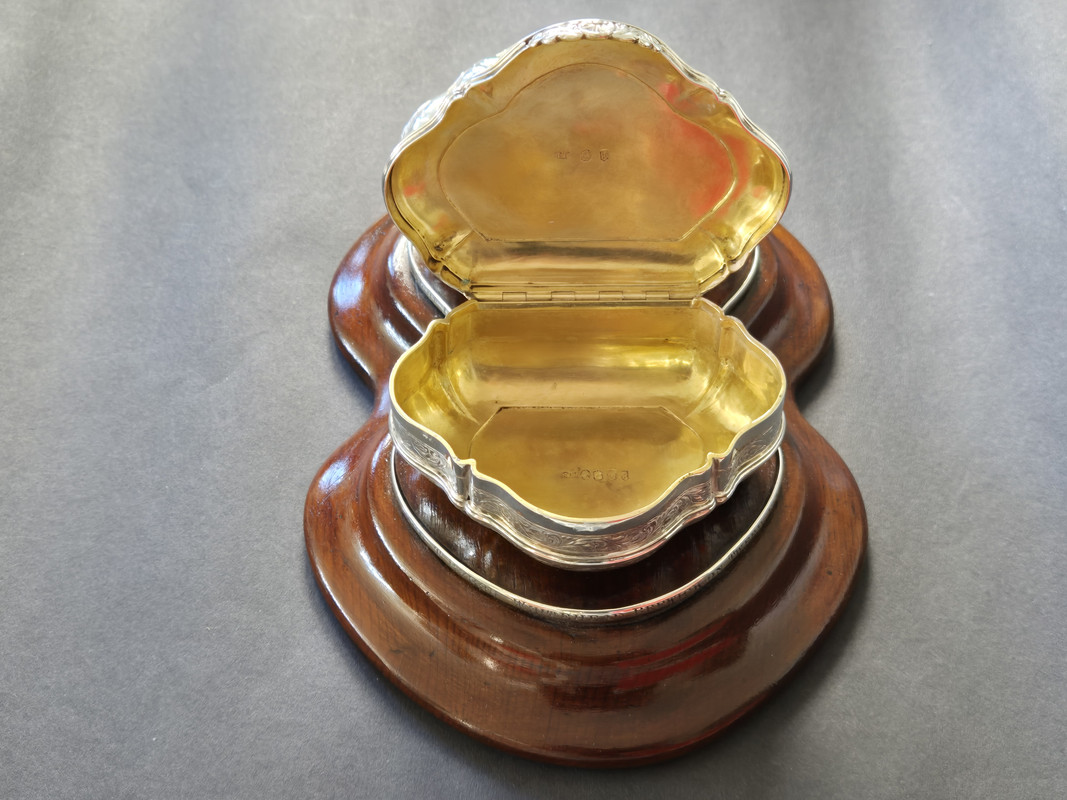
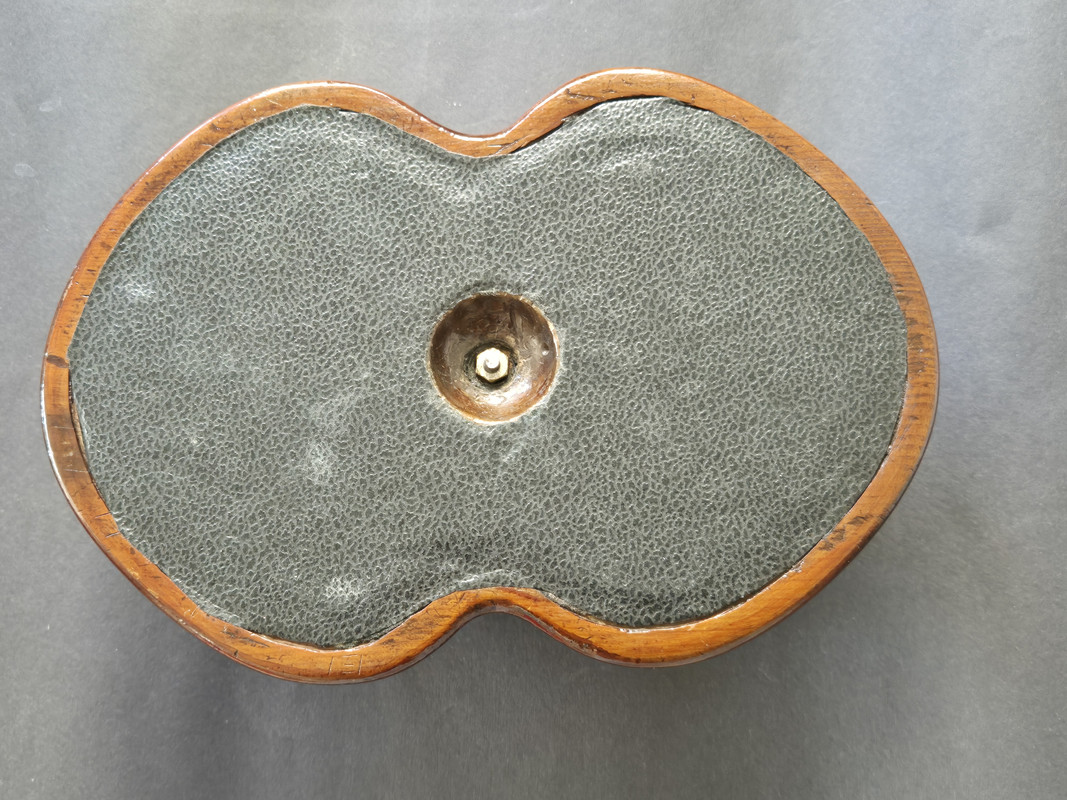
This is the largest double table snuff box I've seen; here is an image of it beside some regular pocket snuff boxes.
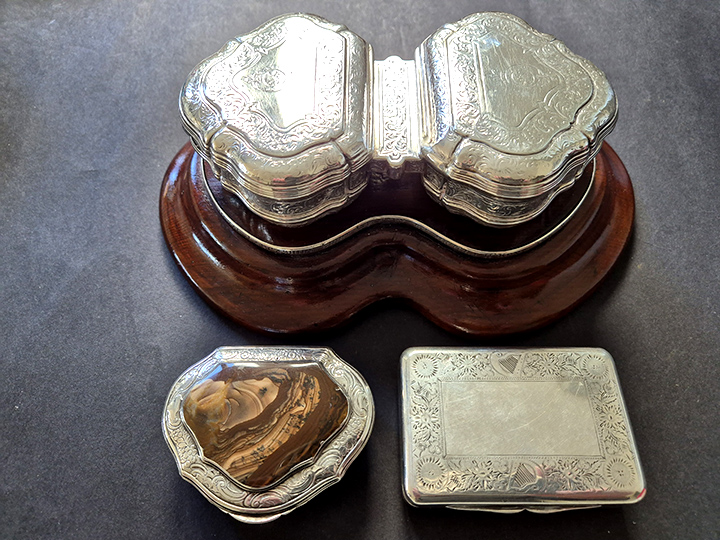
Each of the snuff box bases and covers are clearly hall marked for Dublin 1855 but the maker's mark, JT in a rectangular serrated punch, is interesting as it is not recorded by Bennett in his books Collecting Irish Silver or Irish Georgian Silver.

John Townsend was working in 1855 (his last working year per Douglas Bennett) and this serrated JT mark is also found on an Irish silver ‘Port’ label, Dublin c.1827, attributed also by a silver dealer to John Townsend (see photo below). Apart from the ‘Port’ label, I was unable to find any other silver with this serrated rectangular mark. However, this was clearly a prestigious commission and would not have been awarded to a minor maker whose identity remains unknown to this day. Given this and that John Townsend is known to have made considerable numbers of wine labels, in my opinion, the serrated JT in a rectangular reserve can only be attriburd to him.
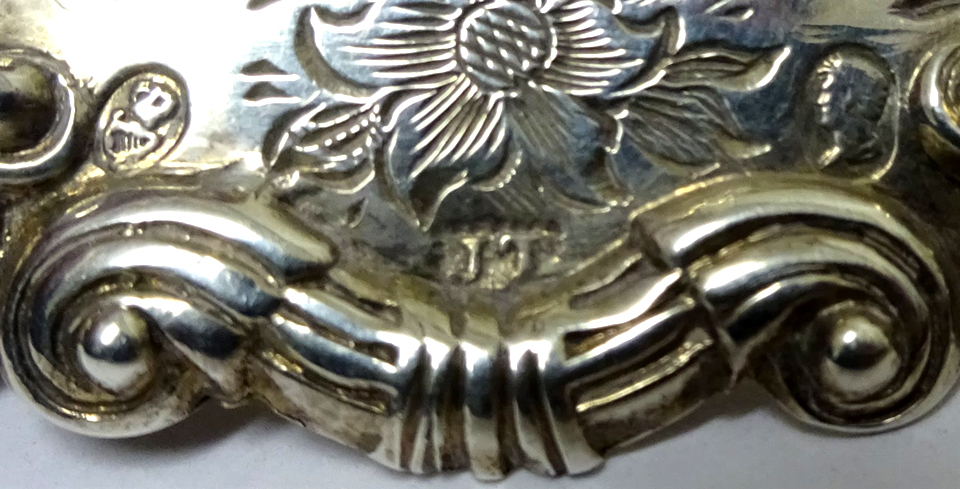
John Townsend seemingly had military connections going back as early as 1805. In 2010, Bonhams sold a silver-gilt snuff box by John Townsend
presented to a Captain in the 21st (Royal North British Fusiliers) Regiment of Foot by Officers of the regiment which has John Townsend's mark stamped twice on the cover but with no other hallmarks. I cannot read a date on the inscription due to the poor quality of the photo but Bonhams presumably were able to or found it elsewhere on the box. Perhaps there are other boxes in British regiment collections, which would have gone back to the UK when the regiments moved out of Ireland during the 19th century, as this snuff box did. If anyone knows of any, please let me know.
The wooden plinth is surrounded by a silver collar engraved 'Presented to the Mess of the 4th Royal Lancashire Light Infantry by Aquilla H. Kent and T. Byron Whitehead, Berwick-on-Tweed 1855' (partially shown in photo below). This is also beautifully engraved on the underside of one of the snuff boxes but unseen unless you remove the snuff boxes from the plinth. Aquilla Howe Kent was a registered Barrister living at 51 Rutland Square West, Dublin around 1854. One of his case histories can be found online. I could not find any information on T Byron Whitehead; presumably he lived in Berwick, Scotland.

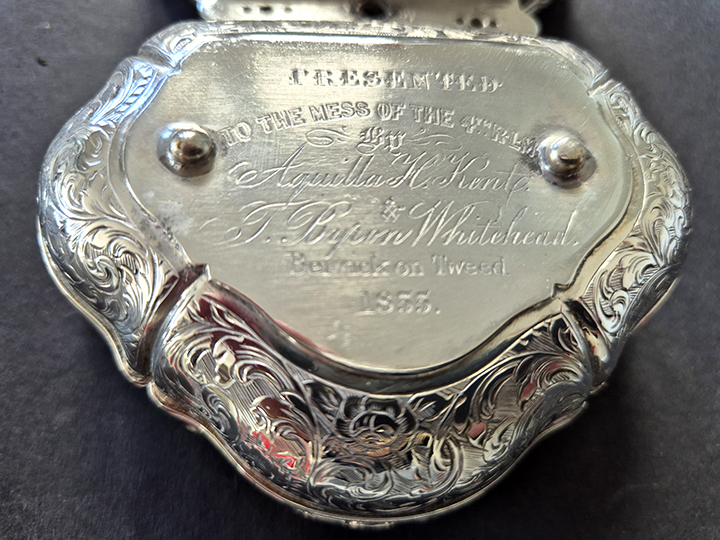
On 22 March 1853 additional Militia battalions of the Royal Lancashire Militia were formed, including the 4th Royal Lancashire Militia (The Duke of Lancaster's Own Light Infantry) at Warrington. Training took place that May. The 4th Regiment was embodied at Warrington in January 1855 and served at Berwick, Dublin and Newry until May 1856.
This is not the only unrecorded mark that can possibly be attributed to John Townsend; there is J.T in a rectangular reserve. It is recorded by
Jackson as preserved on a pewter plate but listed as unknown. A South African dealer (who seems very knowledgeable on Irish silver) mentions this mark on a small Irish silver punch ladle (see photo below), Dublin 1831-32. He favours attributing it to John Townsend although it could be a variation of John Teare who worked until 1833 and used J.T in a rectangular reserve with a triangular shape on left side.
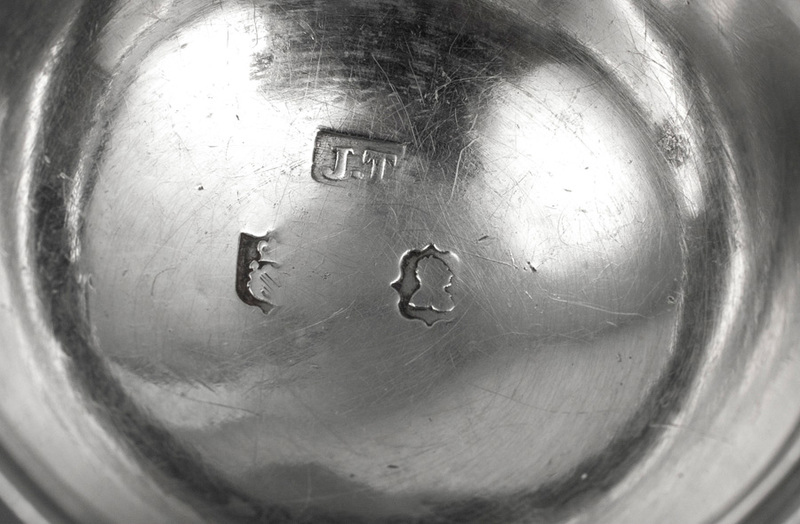
It's very interesting coming across unrecorded makers' marks, especially when found on prestigious pieces of silver such as this so do let me have
your thoughts on this double snuff box and the maker's mark.



